Golden Age Project PRE-573 MKIII Handleiding
Golden Age Project
Receiver
PRE-573 MKIII
Bekijk gratis de handleiding van Golden Age Project PRE-573 MKIII (2 pagina’s), behorend tot de categorie Receiver. Deze gids werd als nuttig beoordeeld door 19 mensen en kreeg gemiddeld 4.8 sterren uit 10 reviews. Heb je een vraag over Golden Age Project PRE-573 MKIII of wil je andere gebruikers van dit product iets vragen? Stel een vraag
Pagina 1/2

W W W . G O L D E N A G E P R O J E C T . C O M I
Vintage Style Preamp
for the 500 Series rack format
PRE-573 MKIII
INTRODUCTION
Congratulations on choosing the Golden Age Project PRE-573 MKIII microphone preamplifier!
The PRE-573 MKIII is a one-channel vintage style microphone, line and instrument preamplifier. The signal
path uses only discrete components like resistors, capacitors and transistors. The microphone and line input
and the line output are transformer balanced, using two different transformers, each one optimized for its
purpose.
This is the way audio components were built before integrated circuits became available. The subjective
sound quality delivered by vintage equipment is often prefered to the one delivered by modern units, a situa-
tion that is even more obvious now when music is recorded with clean sounding digital audio equipment.
The circuit used in the PRE-573 MKIII is similar to the preamp section in the classical 1073 module with a
corresponding sound character that is warm, punchy, sweet and musical. These classic characteristics have
been heard on countless recordings through the years and it is a versatile sound that works very well on
most sound sources and in most genres. The essence of this sound is now available at a surprisingly low
cost, making it available to nearly everyone.
FEATURES
- Vintage Style electronics. No integrated circuits in the signal path.
- The output is transformer balanced and fully floating and can drive a 600 ohm load up to level of about
28 dBu.
- Maximum gain in MIC mode is 80 dB, enough to handle passive ribbon mics with quiet sound sources.
- The total gain range goes from -10 to +80 dB. The 20 to 70 dB range (in MIC mode) is handled by a turn
switch and a toggle switch selects an additional 5 or 10 dB gain.
- Switchable impedance on the mic input, 1200 or 300 ohms, will change the tone of many mics.
- The input can be configured to accept line level signals by another switch, the level is then lowered by
about 30 dB and the input impedance increased to about 10 kohm.
- A selectable two-position 6 dB / octave highpass filter with fres of about 45 or 180 Hz.
- A flexible front panel instrument input for electric guitar or bass that can be switched between a high
impedance active or a mid-Z passive mode. These two DI-options makes it possible to get different tones
from instruments. Mains connected sound modules or other signal sources should be connected to the MIC/
LINE input of the 500-rack, unless they have a fully floating, transformer balanced output stage.
- The output level control makes it possible to make fine gain adjustments and also to overload the main
gain stage(s) for more character and then lower the signal to a suitable level before the output stage.
- Insert jack for inserting Golden Age Project and Premier 500 Series eq and effect units. The insert is acti-
vated by removing a jumper at the back of the module.
- A soft start circuit that ramps up the supply voltage slowly (~10 sec.) to avoid a power-on current surge.
- Phase switch and switchable phantom power with a LED indicator.
- Selectable AIR equalizer adds a boost of about 6 dB centered at 30 kHz.
- A simple but effective signal and overload indicator is offered by a single LED that starts glowing red at
about +4 dBu and then increases its intensity up to the maximum output level.
- Tantalum capacitors in the signal path.
- The 6.8 kohm phantom power resistors are matched to within 0.1% to maintain good common-mode rejec-
tion in the circuit.
- Selectable 600 ohm output termination at the back of the module.
- Circuit board star grounding scheme.
- A solid build quality that will last many years of normal use.

W W W . G O L D E N A G E P R O J E C T . C O M II
CIRCUIT DESCRIPTION
The signal first enters an input transformer.
The primary of the input transformer has
two windings that are either connected in
series or in parallell which results in an
input impedance of either 1200 Ohm or 300
Ohm (in MIC mode).
The transformer are followed by two input
gain stages. For gains up to 40 dB, only one
of them is being used. For gains from 45
dB and up, the second gain stage is inserted in the signal path. Both gain
stages uses only three transistors each.
The signal then goes to the Insert connector with its bypass jumper, to the
output level potentiometer and from there on to the output stage. This stage
again only uses three transistors, the last one in the chain is a hefty 2N3055
power transistor run in class-A mode, driving the output transformer.
So, all in all, the complete signal chain only contains a maximum of nine
active elements. Compare that to the big number of transistors that are usu-
ally used in one single integrated circuit!
USING THE PRE-573 MKIII
Using a preamplifier is not rocket science. Here are some points though to
help you getting the maximum out of the PRE-573 MKIII:
As a start, mount the module in a 500 series rack unit. There are several
alternatives available from different manufacturers, the PRE-573 MKIII
should work fine in most of them. Make sure that the rack unit power supply
is turned off when you mount or remove the PRE-573 MKIII.
MIC / LINE INPUT
Connect your Mic or Line source to the input connector on the 500 rack unit
corresponding to the slot where the PRE-573 MKIII is placed.
For Microphone sources:
1. Set the MIC - LINE switch in the MIC position.
2. Set the MIC/LINE - ACTIVE DI switch in the MIC/LINE position.
3. Set the PASSIVE DI switch in the downward off position.
4. Engage +48 V if the connected mic needs phantom power. It is good
procedure to always disengage the phantom power and wait for about 10
seconds before unplugging a mic.
The 300 - 1200 switch will select the input impedance. 1200 ohm is the
normal position for most mics. Lowering the mic input impedance to 300
ohm will change the tone of many microphones and will give you one more
soundshaping option.
For Line level sources:
1. Set the MIC - LINE switch in the LINE position.
2. Set the MIC/LINE - ACTIVE DI switch in the MIC/LINE position.
3. Set the PASSIVE DI switch in the downward off position.
The LINE input mode will attenuate the input signal with about 30 dB and
also increase the input impedance to about 10 kohm.
If you want the smallest amount of coloration, always set the OUTPUT LEVEL
potentiometer at or close to maximum, and adjust the output level with the
stepped GAIN switch.
The +10 - 0 - +5 dB switch should normally be in the 0 position but you can
set it to +5 or +10 dB anytime you want to add gain.
The +5 and +10 dB positions of this switch corresponds to the -75 and -80
dB positions (with the PRE-573 MKIII GAIN switch set to 70 dB) and the -45
and -50 dB positions (with the PRE-573 MKIII GAIN switch set to 40 dB ) in
the classical 1073 unit.
This setup makes it possible to use both gain stages also for gains of 45 and
50 dB (with the +10 - 0 - +5 switch set to 0) for some added character.
If you want more character, turn the OUTPUT LEVEL potentiometer counter-
clockwise and increase the gain with the GAIN switch. This will drive the
input gain stage(s) harder and provoke more character from them.
DI INSTRUMENT INPUT
Instruments that are not connected to the mains AC power line can be con-
nected to the DI instrument TRS input on the front panel.
The DI input has two selectable modes, Passive and Active. The Active mode
uses a FET-buffer and has an input impedance of about 1,5 Mohm. The
signal is fed through the input transformer and then onwards to the gain
stage(s).
The Passive mode feeds the signal from the TRS jack directly to the gain
stage(s). It has an input impedance of about 100 kohm.
To use Active mode:
1. Set the MIC/LINE - ACTIVE DI switch to the ACTIVE DI position.
2. Set the PASSIVE DI switch in the off position, ie, the downward one.
To use Passive mode:
Set the PASSIVE DI switch in the On position, ie, the upward one.
PLEASE NOTE:
- DO NOT use a higher GAIN than about 70 dB in Passive mode and 50 dB in
Active mode (you can try it if needed but self oscillation might occur).
GAIN might have to be decreased a bit further when Air EQ is engaged to
avoid self oscillation.
- The DI input in Active mode has a much higher sensitivity than in Passive
mode so GAIN must be set lower than in Passive mode for the same output
level. The input impedance is also much higher so the DI input will load the
connected instrument less compared to the DI in Passive mode.
- The tone of most instrument will differ in the two modes giving you several
sound options.
- Signal sources connected to the 500 rack input can remain connected
when you use the DI input.
- DO NOT connect equipment to the DI input (unless they have a fully float-
ing, transformer balanced output). It is only intended for instruments like
guitars and basses. For all other signal sources, do use the MIC/LINE input
on the 500-rack. The reason is that the internal ground of the module and
hence the DI-input jack IS NOT the same as the 500 rack ground.
OTHER FUNCTIONS
The three position HP1 - OFF - HP2 highpass filter switch is located close to
the OUTPUT LEVEL control. The HP1 position has a -3dB frequency of about
45 Hz. The HP2 position has a -3dB frequency of about 180 Hz,
The three position AIR - OFF - PHASE switch works like this:
1. The Phase position simply reverses the phase by reversing the wires from
the secondary winding of the output transformer. Reversing the phase of the
signal is useful on a number of occasions, one is phase reversing the the
lower mic on a snare drum to make it sum in phase with the upper mic.
2. In the middle position of the switch, phase is not reversed.
3. Putting the switch in the upper AIR position adds a boost of about 6 dB
centered at about 30 Khz. It will affect the range from about 5 kHz and up.
There is an unbalanced insert connector located at the back of the unit
where you can insert Golden Age Project/Premier 500 Series effect mod-
ules. The operating level is about -18 dBu. To activate the insert, the jumper
located close to the connector must be removed.
The output transformer used in the PRE-573 MKIII is designed for having
an ideal load of about 600 ohm. The input impedance of most modern units
is 10 kohm or more. The PRE-573 MKIII has a jumper selectable 600 ohm
output termination resistor. The jumper, which is located at the back of the
unit, is connected from factory to set the load to the ideal 600 ohm when
modern units are connected after the PRE-573 MKIII. This will lower the high
end frequency response slightly which can sometimes be a good thing.
Disengaging the termination resistor by removing the TERM jumper will
result in a slightly higher level in the upper frequency range (mainly above
20 kHz) when modern units are connected after the PRE-573 MKIII.
The termination jumper option, together with the AIR option, makes it pos-
sible to achieve different high frequency response curves.
WARRANTY
The PRE-573 MKIII is built to last. But as in any electronic device, compo-
nents can break down. If the unit has a problem and will need repair, you
should contact the reseller where you bought the unit.
The warranty period is decided by the Distributor for your country. The
Distributor will support Golden Age Project resellers and end users with
repairs and spare parts.
REGISTRATION
You are welcome to register your unit at: www.goldenageproject.com
---------------------------
I would like to thank you for chosing the PRE-573 MKIII!
I hope it will serve you well and that it will help you in making
many great sounding recordings.
Bo Medin
Vintage character
for modern ideas!
Product specificaties
| Merk: | Golden Age Project |
| Categorie: | Receiver |
| Model: | PRE-573 MKIII |
Heb je hulp nodig?
Als je hulp nodig hebt met Golden Age Project PRE-573 MKIII stel dan hieronder een vraag en andere gebruikers zullen je antwoorden
Handleiding Receiver Golden Age Project

14 Juni 2023

10 Februari 2023

27 Januari 2023

16 December 2022

23 November 2022

2 November 2022

14 Oktober 2022
Handleiding Receiver
- Alfatron
- HQ Power
- JETI
- Helix
- Crest
- Omnitronic
- Intelix
- Atlona
- Octagon
- Akai
- Goobay
- Adastra
- Denver
- Zalman
- Cambridge
Nieuwste handleidingen voor Receiver
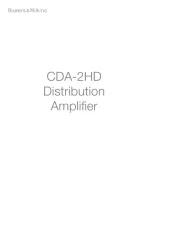
18 September 2025
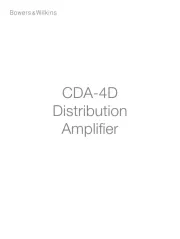
16 September 2025
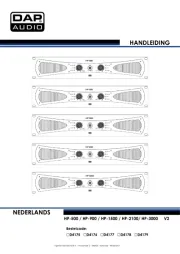
16 September 2025

16 September 2025
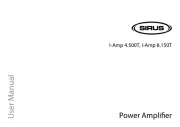
10 September 2025

8 September 2025

8 September 2025

8 September 2025
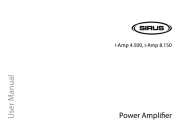
8 September 2025

8 September 2025
